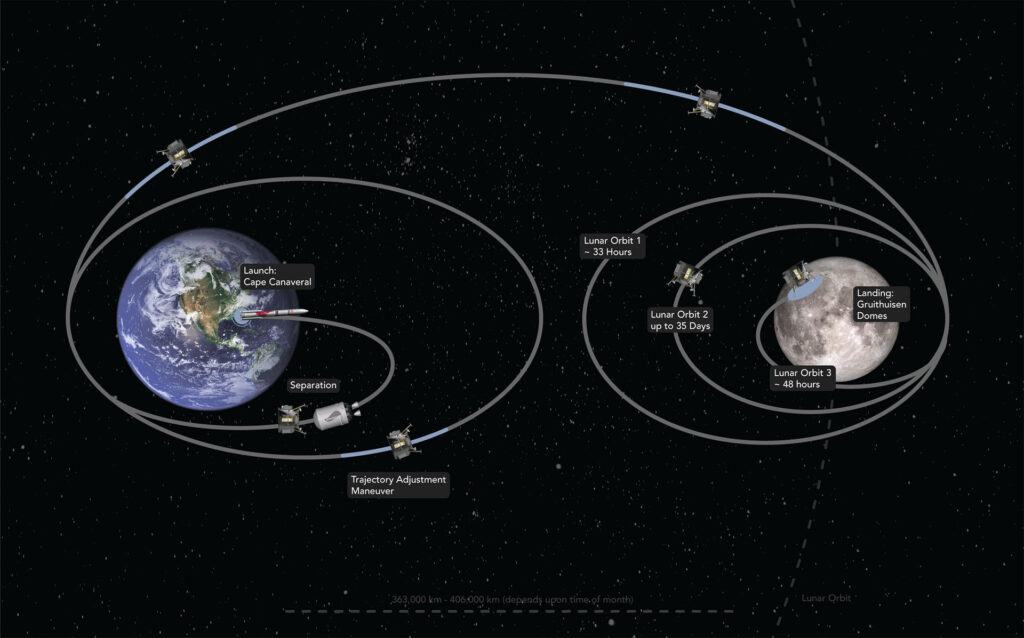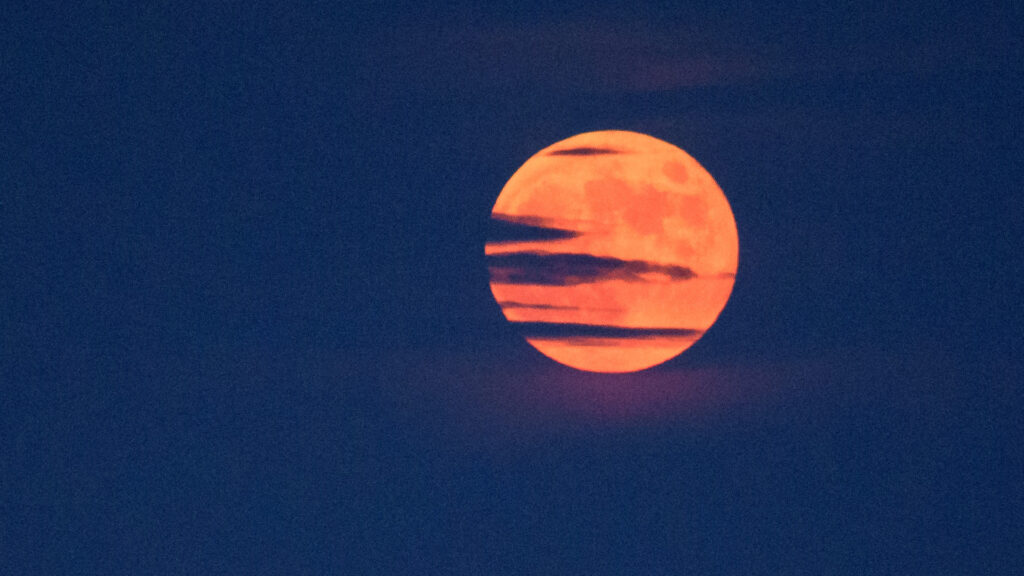The situation remains very critical for Peregrine Mission One. Since it left Earth on January 8, difficulties have arisen with propulsion, with a loss of propellant. Reaching the Moon seems more and more compromised.
A failure of the propulsion system, which causes a critical loss of propellant. This is the conclusion reached by the American company Astrobotic Technology, shared on social networks since January 8, 2024. In fact, its space mission is today in great difficulty and may well not succeed in achieving its objectives.
The problem Astrobotic Technology encountered with its Peregrine Mission One mission was discovered shortly after it left Earth. This failure led to another problem for the probe, en route to the Moon: a poor position of the solar panels towards the Sun, which prevented the machine’s batteries from being properly recharged.

Just before a planned communications outage, the team had forced a ” improvised maneuver » to correctly position the panels. The situation was already critical then. “ Spacecraft battery reaches very low operational level », indicated Astrobotic. It appears that it paid offaccording to a progress update shared on January 8 at the end of the day.
Communications were able to be restored with the brief blackout, and the team was able to see that the panels were correctly oriented, allowing the batteries to be recharged. However, Peregrine Mission One – which left Earth on the morning of January 8, from the launch base at Cape Canaveral, Florida – is not yet out of the woods.
Reaching the Moon is now uncertain
On the contrary. The data received and analyzed show that this failure is linked to a leak. The team has since tried to limit this loss and, if possible, block it. But, according to another updateshared on the evening of January 8, the prospect of reaching the Moon and placing a lander there is increasingly compromised.
The team has the idea “ to get Peregrine as close to the Moon as possible before it loses the ability to maintain its position pointing toward the Sun and subsequently loses energy “. According to Astrobotic, the craft could remain in a stable state of pointing toward the Sun for about 40 more hours, based on current fuel consumption.
That is, if the thrusters do not derail by then. Indeed, the spacecraft’s Attitude Control System (ACS) thrusters are operating well beyond their designed lifespan to prevent the lander from an uncontrollable tumble, Astrobotic noted. Hence the threat of misalignment of the panels with the Sun, which would drain the battery again.


“ Given the situation, we prioritized optimizing science [la sonde embarque des instruments scientifiques, NDLR] and data we may collect. We are currently evaluating alternative mission profiles that may be feasible at that time. », Said Astrobotic.
The American company chosefor the moment, to take advantage of the fact that the spacecraft’s battery is fully charged to use the existing power of the craft in order to ” to perform as many operations as possible » with what works — the ship and the payload. For the rest, you will have to wait to other location points of the company.
Astrobotic can nevertheless count on the support of NASA, and his friendly support. “ Spaceflight is a daring adventure, and Astrobotic is making progress on Commercial Lunar Payload Services and Artemis projects “, highlighted Bill Nelson, the head of NASA. “ Every mission is an opportunity to learn “, added the agency. A learning the hard way for Astrobotic.
Subscribe to Numerama on Google News so you don’t miss any news!
